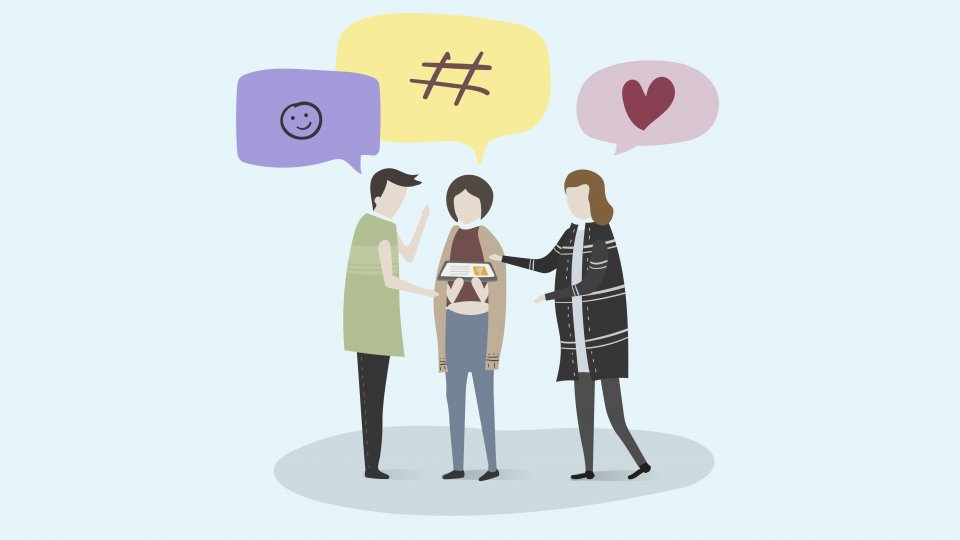The “LOVE-Storm – Together against online hate” project aims to counter the wave of hate, blasphemies and insults on the internet by creating a movement of digital civil courage. Many online users want to counter online hate on social networks, but do not know how to do so. Love Storm aims to fill this gap by giving young people the tools to stop hate speech and effect change on the internet.
For this purpose, the LOVE-Storm platform offers learning and training, a reporting and alerting system – where young people can report hate incidents, raise alerts and request assistance – and an action platform – where users can form teams to tackle online hate more effectively, exchange with and support each other.
LOVE-Storm pursues a threefold objective: strengthening and supporting the victims of online hate; encouraging bystanders to speak out against online hate; and setting clear boundaries for the attackers.
When a user or a victim reports a hate speech incident on the platform, the community comes into action. Reported messages are checked by LOVE-Storm’s trained users, who make sure that it is hate speech situation. If that is the case, the message is posted on the list of open actions, activists prepare their messages to counter hate and the “love storm” begins.
Victims are encouraged to stand up for their rights and strengthen their human dignity and personal value, which are undermined in the hate attack. The LOVE-Storm team supports the victim without attacking the hater. Indeed, LOVE-Storm actions are focused one the hate act itself, they don’t aim to find culprits or solve underlying conflicts.
During their actions, activists let other users know that hate is not tolerated in the community and demonstrate how to effectively counter hate. Moreover, they encourage bystanders to not look away, intervene and become part of the “love storm” by showing positive attitudes, possibilities for actions and avoiding accusations.
When it comes to the hater, they do not expect to convince them, but rather set clear boundaries about what is allowed in a discussion and how they must behave in the online community. They do not forget that they are persons too and they do not attack them, but just challenge the hate act itself.
Among the many materials produced in the framework of the project, the “Was tun!” (in English “What to do!”) information sheet offers guidelines on how to respond adequately and efficiently to online hate, through ten concrete tips, which have been replicated below.
1. Do not look away!
If no one challenges hateful messages, the attackers feel empowered. The bystanders are deterred from intervening and accept online hate as the social norm. Even a simple “No, I see this issue differently” can break this vicious circle.
2. Strengthen the victim
With hate crimes, opinions and people are being displaced from the internet. Support the victim, so that they can stay and have a say.
3. Look for help
 If you or others are attacked, ask your friends or your viewers for support. Give them hints that are as concrete as possible as to how they can help.
If you or others are attacked, ask your friends or your viewers for support. Give them hints that are as concrete as possible as to how they can help.
4. Support other opponents
If you see other commentators reacting positively and opposing the hateful comments, support them. That way, you can put an end to the hate together, and develop a good relationship.
5. Stay calm
You could be tempted to react with violence yourself. Don’t. In the worst case scenario, it may lead bystanders to take the haters’ side. Don’t forget: someone who acts aggressively is not always at fault, but from the outside it almost always looks like it.
6. Try not to let the hate affect you
If you are attacked, bear in mind that the hate is not directed at you personally, but rather at a web of fantasies in the mind of the attacker. You are simply the trigger on which long-accumulated hate unloads.
7. Set clear boundaries
 Most of the time, it is impossible to convince someone on online forums, comment sections, social media, and so on. But you can set clear boundaries! Make it clear to attackers that their hate will not be tolerated. Do not start a conversation unless the attack has ceased.
Most of the time, it is impossible to convince someone on online forums, comment sections, social media, and so on. But you can set clear boundaries! Make it clear to attackers that their hate will not be tolerated. Do not start a conversation unless the attack has ceased.
8. Write your own narrative
Attackers expect you to react in a certain way, and they use this to control the discussion to their advantage. Do not bother with trolls, who only want negative attention.
9. Prepare yourself
People instinctively react to (verbal) violence by fleeing, attacking or freezing. By practicing beforehand, you can go through the different possible reactions, and therefore see which reaction patterns can trick you instinctively. This will help you respond effectively during an attack.
10. Organise yourself!
Arrange with other people to help each other out in case of emergency and set up an “alarm system”. On the Love-Storm platform, you will become part of a wider community. There, you can network with other groups, train together and have more allies to respond to attacks.
All these tips are summarised in the “What to do!” flyer (German, English).
A Twitter user who was helped and supported by LOVE-Stormers recounts : “the LOVE-Storm team didn’t refer to the content of the Tweet attacking me. Instead, they showed me that I shouldn’t let it get to me and they called out the attacker and tried to discuss it with them. Reading their Tweets has made me feel empowered, so much that I initiated a conversation with the account that had attacked me in the first place. I had the feeling that both the attacker and myself could explain our positions better. We haven’t reached an agreement, which is not a tragedy, but at least we listened to one another.”
Similarly, a LOVE-Stormer explains: “I have been consistently reacting to hateful comments for years now. A lot of the times, I find myself confronted with an overwhelming superiority that leaves me helpless, frustrated, and that even makes me lose faith in humanity. After a similar situation with four other LOVE-Stormers, we realised that other people had joined us in opposing a hateful comment. We were able to help and encourage them. In the end, regardless of all the ‘hopelessness’, it was so much fun that we definitely want to do it again next time.”
For more information, visit the LOVE-Storm website.






